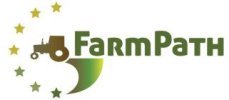The second stage of research - Regional visions of agriculture
Research stage two - Regional visions of agriculture
The second phase of research took place in 2013 and aimed to build on the first stage mentioned above to identify ideal future situations for agriculture and the steps needed reach those ideals in Europe. A project report on the process and findings is available here.
This stage in the research involved a series of focus groups with local stakeholders who were selected to represent the full spectrum of people with rural interests, and those involved in land management and agriculture across the European regions under investigation in the project. This process was replicated in selected regions in seven partner countries and focused on visions for agriculture in the year 2030.
Image: Stakeholders in germany participating in the second stage of FarmPath research
Aim
The research aimed to build on findings from the case study work on changes to agriculture to inform participatory identification of multiple future transition pathways to sustainable agriculture at regional level, typifying both pathways and regions identified through stakeholder scenario development exercises in order to:o:
- further develop the FarmPath conceptual framework in relation to concepts of ‘transition pathways’ and ‘regional sustainability of agriculture’
- identify a set of pathways and visions for sustainable agriculture, which reflect both regional differences and social and technological innovation needs to attaining these visions
- assess how possible institutional arrangements, support measures and socio-technical networks amongst actors within the farming community, policy, technology and wider society can lead to increased regional sustainability of agricultures
- involve participants in this discussion and identification, leading to a higher level of awareness on possible transition pathways for their region and join references
- development of a handbook for assessment of agricultural sustainability at regional level, and identification of possible future transition pathways (here the objective is to reach diverse institutions and inform about FarmPath results that identify what is needed to make transition pathways happen)
- provide an overall analysis of transition pathways towards regional sustainability of agriculture in Europe.
The visioning process was undertaken in a specific region in each of FarmPath’s study countries and involved three steps.
- Recruitment and identification of participants’ priorities for agriculture (January-February, 2013)
- Focus groups (February-March, 2013) to identify visions for agriculture
- A workshop (May, 2013) to identify steps needed to progress towards those visions
1. Recruitment
Researchers met with potential participants in the process, recommended by the National Stakeholder Partnership group in each country. Potential participants were met with individually or in small groups to discuss the visioning process, and identify their priorities for the future of agriculture in the region.
2. Focus groups
Firstly, small focus groups of around 8 people will take place. These focus groups will look at ideal visions of agriculture in the area of study. This is, ideally, what you would like to see in the area, agriculturally speaking, in 2030.
- ‘Official interests’ – people in environmental organisations, farmers‘ organizations, other established NGOs, business associations, unions and national/regional/local authorities.
- ‘Run the land’ – people acting upon the policies managing the land, farmers, land owners, hobby farmers, businesses associated with agricultural production and those responsible for protected areas.
- ‘Those that benefit from the management of the land’ – end users, recreationists, health related charities, educational people, community well being and social care, residential associations, consumer organization and job interested parties.
- ‘Young farmers’ – defined in the glossary as those “who are under 40 years of age, possess adequate occupational skills, set up an agricultural holding for the first time and are the head of the holding”, following the definition used in the regulation on support for rural development. New Entrants may or may not be in this group and may be in other groups as well, e.g. in farmers/land managers group.
3. Workshop


Results
The results of this research process (i.e. the visions and steps needed) will be communicated to several levels of government and the European Commission. For example, in Scotland this will be Aberdeenshire Council and other relevant local authorities, the Scottish Government, and the European Commission. After meeting our Scottish stakeholders in Aberdeen in the focus groups we produced this document to show their final visions.





